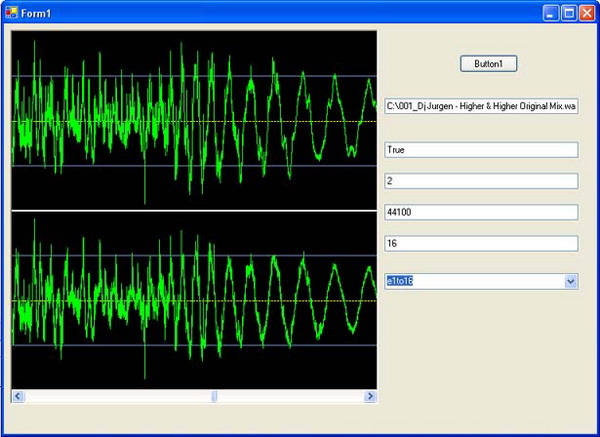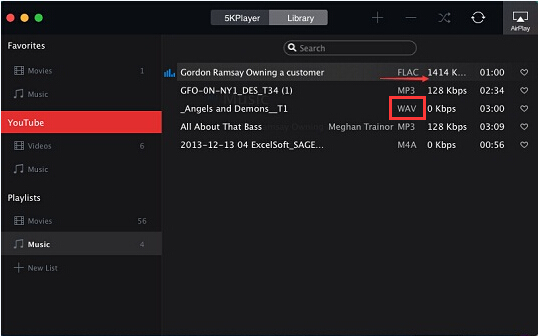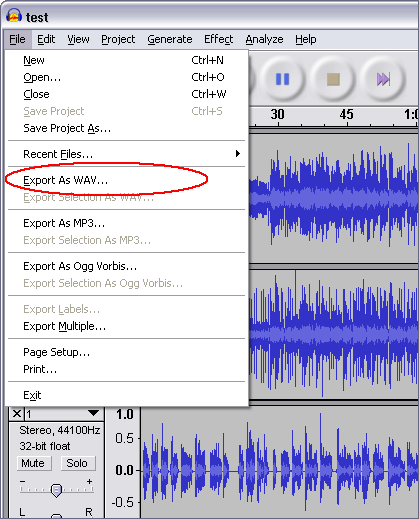

- Mbed cookbook waveplayer wav file install#
- Mbed cookbook waveplayer wav file code#
- Mbed cookbook waveplayer wav file professional#
- Mbed cookbook waveplayer wav file windows#
The third demo uses the board’s I2C temperature sensor to measure the board’s temperature.

Tilting the board moves the solid black bubble. Save it on the mbed flash drive and hit reset.Ī bubble level display using accelerometer data. This demo uses the application board’s three axis accelerometer and the LCD display working in graphics mode to build an electronic version of a bubble level.Īpp-board-bubble-level_lpc1768.bin - has the compiled code.
Mbed cookbook waveplayer wav file code#
The LCD graphics library has a handy member function to draw circles and the library code for the accelerometer returns G force readings, so the code is relatively short. As the board is tilted, the X and Y G forces are used move the small black bubble on the display. The project can then be compiled and downloaded to the mbed module. Clicking on the “import program” link below copies all of the project files into the cloud compiler and sets up a new project. The second demo uses the board’s three axis accelerometer and the LCD display working in graphics mode to build an electronic version of a bubble level.

There should be an extra row of black socket pins on both sides of the mbed module. There are also small “GND” and “VOUT” silkscreen labels on the board and mbed module that should line up (near USB cable on left in image below). Note the correct orientation in the photo below. Save it on the mbed flash drive, hit the mbed reset button and the LED should blink.įor the second demo, the mbed must first be carefully plugged into the mbed application board. In the code, note the use of the mbed DigitalOut() and wait() APIs.Īpp-board-blink_led_lpc1768.bin - has the compiled code. Click on “main.cpp” to view the C++ code in the compiler window. Hit the reset button on the mbed module, to run the most recently downloaded code. Click “compile” and save the compiled bin file to the mbed flash drive. You must always logon first to use the compiler. The project files are all stored on a cloud server. Select a name for your new program and click "OK". Logon, click on the compiler link (upper right) and select new when the compiler appears. The mbed module appears as a USB flash drive, open the flash drive, and click on the file“mbed.htm” and follow the instructions to signup for a new account. A new user account must be setup to use the cloud compiler and the mbed module must be plugged in first to setup a new account. It is the default project code for a new project in the online cloud compiler. This first demo just blinks an LED on the mbed module and the application board is not required. PowerPoint slides used prior to this material at the workshop to introduce mbed to faculty are also available. While working through the demos, keep this web page open in one browser tab while the compiler is open in another browser tab so that it is possible to quickly switch back and forth between the two web pages. Libraries used have also been updated to the most recent versions as of 9/22/13. They are based on selected code examples and I/O libraries posted earlier in the cookbook’s mbed application board page.
Mbed cookbook waveplayer wav file install#
If you’re using Linux, you’ll have to install a player to open WAV files-VLC is a great choice.These examples for the application board were developed for the ARM University Program Faculty Workshop at ESWEEK 2013.

In macOS, they play by default in iTunes.
Mbed cookbook waveplayer wav file windows#
In Windows 10, WAVs play by default in Windows Media Player. Windows and macOS users can play WAV files right out of the box without having to install any third-party software. WAV files are widely used, and because of this, many programs can open them on different platforms-Windows Media Player, Winamp, iTunes, VLC, and QuickTime, to name a few. RELATED: What Are the Differences Between MP3, FLAC, and Other Audio Formats? How Do I Open Them?
Mbed cookbook waveplayer wav file professional#
Because of this, they’re mainly used in the professional music recording industry to retain the maximum quality of audio. WAV files are generally going to be much larger than other popular audio file types, like MP3, due to the fact they are typically uncompressed (compression is supported, though). This is a common method Windows uses for storing audio and video files- like AVI- but can be used for arbitrary data as well. WAV file formats use containers to contain the audio in raw and typically uncompressed “chunks” using the Resource Interchange File Format (RIFF). RELATED: What Lossless File Formats Are & Why You Shouldn't Convert Lossy to Lossless WAV files are uncompressed lossless audio and as such can take up quite a bit of space, coming in around 10 MB per minute with a maximum file size of 4 GB. The format uses containers to store audio data, track numbers, sample rate, and bit rate. A WAV file is a raw audio format created by Microsoft and IBM.


 0 kommentar(er)
0 kommentar(er)
